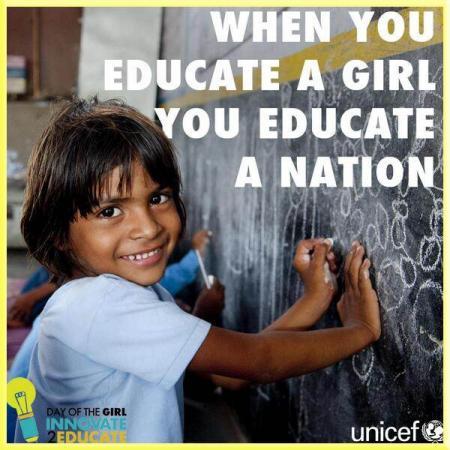
Educating girls gives them the freedom to make decisions to improve their lives, which has deep social implications. Giving girls access to schooling is a central part of eradicating global poverty, according to the World Bank, which said better educated women tend to be healthier, participate more in formal labor markets, have fewer children and marry later, theguardian.com wrote.
The UN’s Sustainable Development Goals call for gender equality and a quality education for all by 2030. So what action needs to be taken to overcome the complex global barriers to not only getting girls into school but also providing them with a meaningful education?
These questions were tackled by a panel of experts from the non-profit, academic and private sectors, at a Guardian roundtable event in New York, chaired by Guardian journalist Anna Leach and supported by anti-poverty NGO Opportunity International.
A key obstacle to girls participating in school life is child marriage. Every year 15 million girls under the age of 18 are married.
The reasons for child marriage and a lack of education for girls are complex and interlinked, said Heather Hamilton, deputy executive of Girls not Brides.
“Both come from the base view of girls as not as valuable as boys,” said Hamilton.
“If we don’t have local values changing, and support girls as valuable people in their own right … we’re not going to see the shift in outcomes,” she added.
One project looking to tackle this is Girl Effect’s Yegna, an initiative using music and radio to spread awareness of girls’ rights in Ethiopia. It recently tackled child marriage through a radio drama. Research in the Addis Ababa and Amhara regions of the country found that while 53 percent of boys not aware of Yegna said they would report instances of child marriage, this jumped to 95 percent among boys who listened to the show. It’s not action taken yet, admitted Natalie Au, global gender director of Girl Effect, but it’s ‘an initial first step’.
While child marriage has cultural roots, poverty plays a huge role, said Dolores Dixon, executive director in Canada for Camfed, a non-profit working in African countries to support the education of marginalized girls.
“Parents who can afford it would not necessarily hold back their children from going to school,” said Dixon, “but if you can’t afford it you will then have to make a choice … they feel [marriage] is the best option within the limited options.”
Young women who have been through Camfed’s education program, who themselves may have faced child marriage, can be important advocates, said Dixon.
“Communities can relate to the examples and their experiences and they can also see role models in front of them,” said Dixon.
Engaging these communities must be done sensitively.
“It’s not trying to turn everything upside down, because you will immediately face resistance,” said Eva Halper, director of corporate citizenship at Credit Suisse, “it’s finding the right way to approach those challenges from the bottom up.”
Halper referred to a project run by education non-profit Room to Read in Tanzania. Girls in some communities there undergo lengthy initiation ceremonies when they reach puberty, after which they are considered adults able to work or marry. Room to Read’s approach with the community, said Halper, “is not to say: ‘Stop these initiation ceremonies — you can’t do that’ ... but to reach a compromise of please delay it.”
Part of ensuring the education environment benefits girls is about making schools safe, supportive learning spaces. “Gender-based violence in and around school is a reality,” said Fyles. The international education sector has spent so long trying to get children into school, especially in the developing world, only to realize girls are facing dangers there, she added. “[Girls] don’t think about learning when they’re trying to figure out what the next exit is or whether they can go to the toilet and be safe.”
The global community has recognized the issue, said Fyles. The UN, for example, has included a commitment to address gender-based violence in its Education 2030 initiative.
More creativity is needed when considering how to reach girls in remote communities, such as in northern Nigeria, who simply cannot access formal education, said Au.
“It’s not just bums on seats in schools; we need to be a bit more innovative and progressive about how we go to where the girls are while also getting them into formal processes.”
Life skills such as communication, persistence and negotiation, also have a role to play, said Heather Simpson, chief program officer of Room to Read. But it’s an area often overlooked by ministries of education, she added.
The Forum for African Women Educationalists (FAWE) in Malawi is one organization implementing life-skills education with women mentors, who are also providing menstrual pads. “This is the kind of really integrated approach that we need to be supporting,” said Hamilton.
“Girls are central to the global poverty story,” said Dana Rice, managing director of philanthropy for Opportunity International. But change will be held back until there is a shift in cultural ideas of what a girl is.
“It’s about how girls value themselves, the voice that they have to articulate what they think, and communities really valuing them as contributors to their own development,” said Au.
